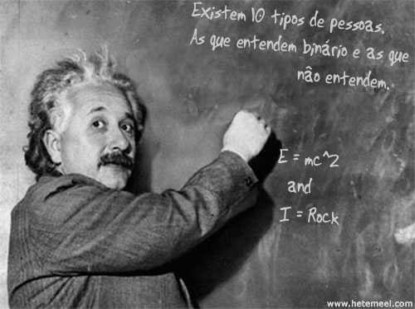

Article |
Taekwon-Do Science By Stuart Anslow & Bob Hubbard |
I was asked by a friend why 'Gen. Choi identified 'power' by means of a formula which is in fact nothing but the definition of kinetic energy'? (his words). My reply was: Well, I am not speaking for the General or from a point of view that I know about all the physics and science, but IMO he used the formula to push his point that TKD was based on scientific principles (which was part of his reasoning that was why TKD was better than other arts), also, I was always taught that TKD utilizes kinetic energy. Perhaps further details on the formula by you would help people like me understand it more! Now one thing I never understood is why people use these points to claim Taekwon-do is better than other arts, as to me, all arts are equal, but more so.. there is no proof in the pudding anyway! Recently I was chatting to a TKD guy and he was trying to explain to me the virtue of the first going forwards, then backwards, then hitting its target (the ITF way) and I asked him why its better and he simply said that "without doing it, it wont hit the target with power" - absolute nonsense I said, what about Karate-ka who punch straight from the hip - many have tremendous power! Anyway, this emphasises my point of the 'scientific' side of TKD being interesting, but still a politics tool to promote TKD.. understandable at the time as General Choi wanted to promote and push his art as the best around and establish it next to already established arts, but should people still be doing that? I asked my friend to explain further and this is what he said: OK, I'm gonna try. I want to start, as I mean to finish, with the point that all martial arts, in fact all activities, use scientific principle in exactly the same way. I consider the 'scientisation' of what is really very straightforward stuff to be a marketing trick, as has already been suggested above. More on this below... The expression that Choi supplies here is essentially a definition of the notion 'capacity to cause activity' that the concept 'energy' formalizes; it follows as an automatic consequence of the definition of force---change in momentum---from very early classical mechanics, and as I'll get to directly, doesn't seem to me to add much in actual value to Choi's or similar discussions. If the activity in question imposes a structure on nature in a certain sense, you have one kind of energy, which the formula Choi cites partly measures. (The other kind of energy is associated with 'waste' motion, involving friction, viscosity, and so on.) What Choi is giving is the basic expression for kinetic energy, which reflects the capacity to do work---which technically is nothing other than force over distance (and is subject to a certain conservation condition). That definition applies to everything that moves: in the simplest case, the amount of energy 'carried' by a moving object is 1/2 the mass of the object x the velocity of the object squared. If that energy were transferred completely to another object, by a collision, say, the kinetic energy would express exactly how much work had been accomplished in taking the target, originally at rest, up the motion it underwent as a result of the impact. |

And that's why I don't really see that giving these fairly simple definitions of
concepts from mechanics adds any value to the discussion. We're not talking about
figuring out a detailed description of a physical system here; always, in such
discussions, we're talking about very simple things, purely qualitatively, really---and
qualitatively, all such formulae tell you is what you already know:
it takes more work to get your fist moving faster, so the extra effort you have
to put into getting that greater velocity in your striking translates into a
greater impact at the target. You can increase impact in two ways: |
increase the mass of the striking limb, a practical impossiblity under normal circumstances;
or you can increase the speed of the striking limb in the given direction,
which is eminently practical. This holds for every MA, for every racquet
or ball sport, and any other activity under the sun. Basically, the formula displayed
in Choi's presentation (and a dozen other 'scientific' dressings-up of
these fairly simple mechanical issues) don't add anything to what we already know
strictly from experience; I interpret them, just as I interpret the use of
the same formula in elementary ski-technique guides or analyses of the use of spin
in table tennis or weight-training, as a way of dressing up something very
simple to give it a veneer of scientific authority. The formula itself, as I say, follows immediately from the definition of work asforce over distance. You can get a very rough idea of where that formula comes from by looking just at the units involved in that definition of work. Force is defined as change in momentum, which—writing 'a times b' as a x b—is identical to mass x acceleration, i.e., mass x (velocity/time). So if you look at what work x distance come to, given these definitions, you can see that it's [mass x (velocity/time)] x distance. But if you shift the denonimator on the middle term to the end (just as (3/8)x 16 = 3 x (16/8)), you get mass x velocity x distance/time, which is of course mass x velocity x velocity, which we can in turn write as mass x (velocity)^2. Now, evaluate this quantity at a time when the particle is at rest, i.e., its velocity is zero, so the work is 0. Evaluate it when it's travelled a distance z, and you have mV^2, where V is the velocity of the particle at the instant it is z away from its original position. Take the average of the two, and you get (1/2)mV^2, so that the energy to do this amount of work is the same, i.e., (1/2)mV^2, and Bob's your uncle. This is a crude derivation of the result, but it captures the essentials of the operations involved. And the difference between power and energy is just that energy tells you how much work you can accomplish, but not the time duration involved; that's up to you. The more energy you supply in a given length of time, the more impact your strike will have. The same amount of work, carried out over a year, will change the world in no obvious way; carried out in a hundredth of a second, it will punch a hole in a half-inch thick plate of chrome-moly steel. Given a certain amount of energy, you need to deliver it faster in order to be more effective. This is news? |